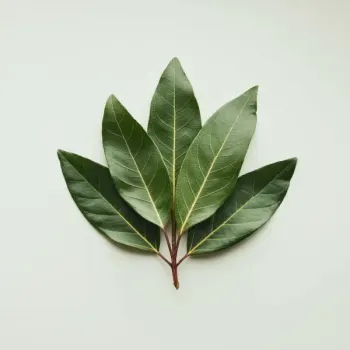Bay leaves and oregano are culinary herbs. Bay leaves offer a woodsy aroma and are used whole in slow-cooked dishes, removed before serving. Oregano provides a bold, earthy flavor, used fresh or dried, and complements Mediterranean and Mexican cooking. They enhance different dishes with their distinct flavors.

Bay leaves, derived from the laurel tree, impart a woodsy, herbal flavor to dishes. They are often used whole and removed before serving, releasing their essence during the cooking process.

Oregano is a robust herb commonly found in Mediterranean and Mexican cooking. It can be used fresh or dried and adds an earthy, slightly bitter and peppery note to recipes.
Bay leaves provide a subtle depth, often used in slow-cooked dishes, while oregano offers a bold flavor ideal for dishes that benefit from a punchy herb presence. Bay leaves are more about aroma than taste, and oregano is about providing a distinct flavor profile.

Your ultimate Recipe Box, Meal Planner, and Cooking Class all in one
Best used in recipes like beef stew, chicken soup, and vegetable broths, where a single leaf can infuse the entire pot with complexity. Expect a nuanced flavor that builds with cooking time. Be sure to remove the leaf before serving. Ideal for heartier stews with tomato bases or Mexican-inspired soups. Oregano complements other bold flavors well and can withstand longer cooking times. Use sparingly as it can overpower other herbs.
Excellent in slow-roasted meats and pot roasts. They infuse the meat with a subtle aroma that enhances without dominating. Remember to remove the leaves after cooking. A staple in Greek and Italian meat dishes like lamb roast or chicken marinades. It pairs well with lemon and garlic, adding a zesty flavor that penetrates the meat during marinating or roasting.
Useful for adding layers of flavor in slow-simmered sauces such as Bolognese, bechamel, or gravies. The leaf is typically removed after cooking to avoid bitterness. Dominant in pizza and pasta sauces, especially where tomato is a key component. Dried oregano sprinkled on near the end of cooking maintains its vibrant taste and aroma.
Both bay leaves and oregano contain essential oils and nutrients beneficial for health, though they are typically used in such small amounts that their nutritional impact is minimal.
| Nutrient | Oregano ( Per Teaspoon ) | Bay Leaves ( Per Teaspoon ) |
|---|---|---|
| Fat | 0.1g | 0.2g |
| Fiber | 0.8g | 0.5g |
| Calcium | 2.8% DV | |
| Protein | 0.2g | 0.1g |
| Calories | 5 | 5.5 |
| Vitamin K | 14% DV | |
| Carbohydrates | 1.2g | 1.3g |
Due to the difference in flavor profiles, bay leaves are not a recommended substitute for oregano, especially in recipes where the pungent flavor of oregano is essential.
Yes, bay leaves should be removed after cooking as they can be a choking hazard and have a very unpleasant texture if chewed.
Absolutely! Fresh oregano has a milder flavor than dried, so you may need to adjust the quantity to achieve the desired taste.
Dried bay leaves and oregano can be stored in an airtight container in a cool, dark place for up to a year. Fresh oregano should be used within a week or can be frozen for longer storage.
Yes, in some tomato-based sauces and certain Mediterranean stews, both bay leaves and oregano can be used to create a layered herbaceous flavor.